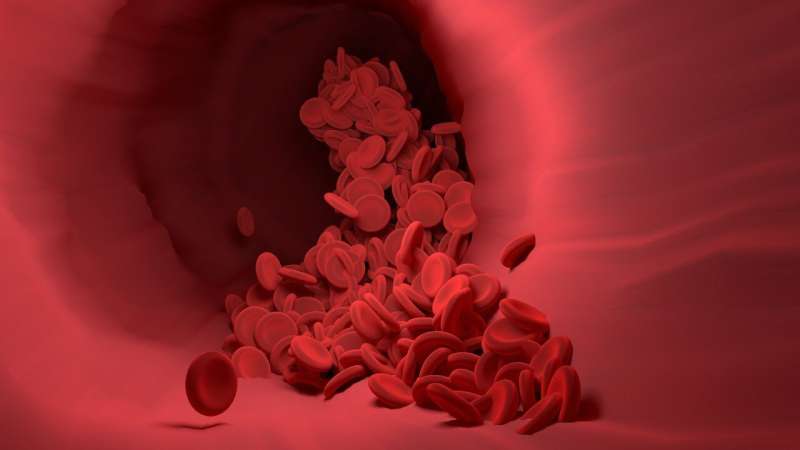Credit: CC0 Public Domain
Bleeding can happen during surgery, after trauma, or even spontaneously. And when it does, blood cells called platelets rush in to stick to the injured blood vessels and stop bleeding as quickly as possible. Or at least that's what should happen. When the cause of bleeding is not having enough platelets, that's called thrombocytopenia. Other causes of bleeding involve platelets that don't work well, and these conditions are called platelet function disorders.
No matter the cause of bleeding, one of the most common treatments is platelet transfusion therapy, which doctors have found works quite well for people with thrombocytopenia because they simply need more platelets. But in people with certain platelet function disorders, platelet transfusions are not effective.
Previous studies have suggested that the patient's dysfunctional platelets might get in the way of the healthy transfused platelets. The lab of Wolfgang Bergmeier, Ph.D., professor of biochemistry and biophysics, hypothesized that there is competition between the dysfunctional platelets and the healthy transfused platelets at the site of blood vessel injury, and this would cause platelet transfusion therapy to be less effective.
Robert H. Lee, Ph.D., a postdoctoral fellow in the Bergmeier lab, led experiments using mouse models and state-of-the-art imaging to visualize how healthy and dysfunctional platelets interact at the site of injury.
"We found that while thrombocytopenic mice only needed a small number of transfused platelets to prevent bleeding, a mouse model of a platelet function disorder needed many more transfused platelets," Lee said. "In fact, bleeding would only stop if the ratio of dysfunctional to healthy platelets was 2:1 or less."
UNC researchers reveal how bad platelets get in the way of good transfused platelets in patients with bleeding disorders. Credit: Robert Lee and Wolfgang Bergmeier, UNC
When Lee and colleagues performed real-time imaging studies, they observed that healthy and dysfunctional platelets do indeed compete with each other for space in the injured blood vessel. Their studies also characterized the molecular mechanisms by which dysfunctional platelets delay the adhesion and function of transfused cells, information that will be critical to improve treatment strategies.
"We hope these findings can help guide future clinical studies and ultimately improve guidelines on the optimal use of platelet transfusions to prevent bleeding in patients with certain platelet function disorders," said Bergmeier, senior author and member of the recently established UNC Blood Research Center.
These findings were published in Science Translational Medicine.
More information: Robert H. Lee et al. Impaired hemostatic activity of healthy transfused platelets in inherited and acquired platelet disorders: Mechanisms and implications, Science Translational Medicine (2019). DOI: 10.1126/scitranslmed.aay0203
Journal information: Science Translational Medicine






















